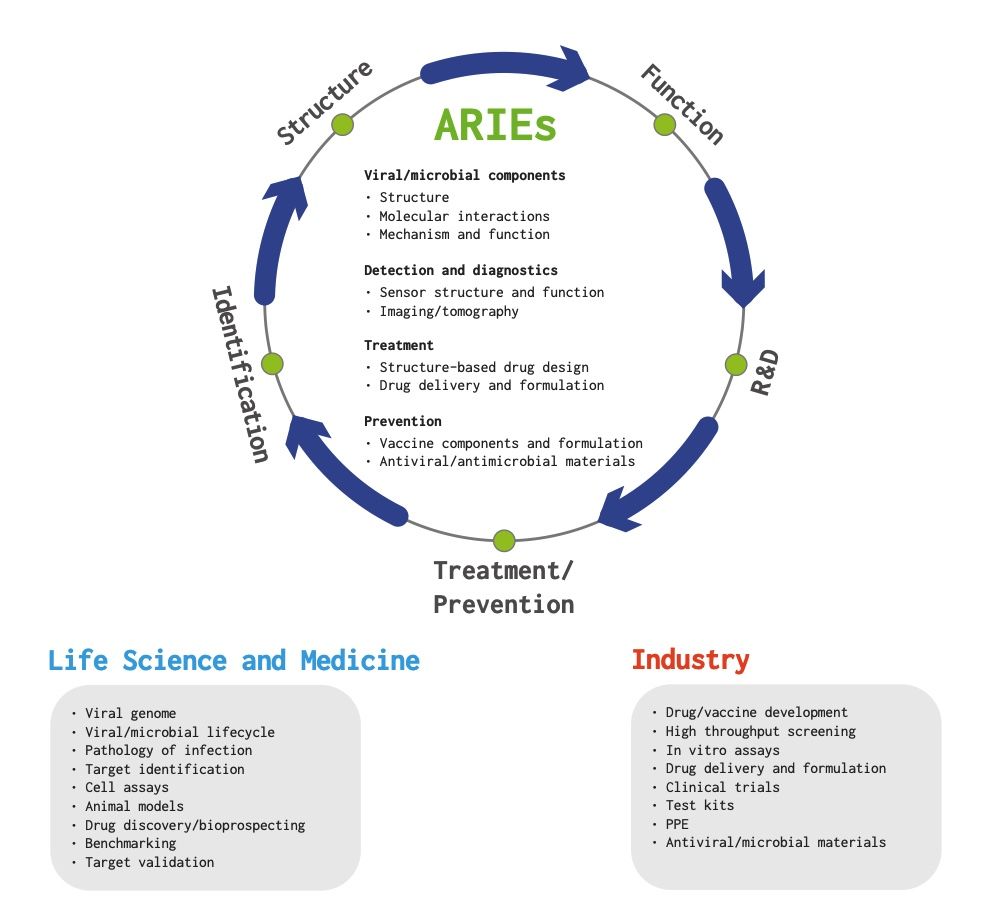
Analytics Research Infrastructures of Europe (ARIEs) have released a new joint position paper describing how the ARIEs have responded rapidly to COVID-19, as well as how they will address the scientific and operational challenges posed by the pandemic and future viral or microbial threats.
ARIES comprise a number of research infrastructures and facilities – powerful photon sources, such as synchrotron storage rings, laser systems and free-electron lasers; sources of neutrons, ions and other particle beams; and facilities dedicated to advanced electron-microscopy and high magnetic fields. During this year the broad range of research and analytical techniques available at the ARIEs, together with strong scientific networks established in Europe and collaboration, have made it possible to co-ordinate efforts in Europe to try and combat COVID-19.
"The impact of the ARIEs results from the complementarity of their unique individual analytical techniques, which, in combination, provide unmatched analytical capabilities to study infectious diseases. It ranges from investigations at near atomic level (required for understanding the molecular mechanisms of infection and the structure-based design of antimicrobial and antiviral therapeutics) to developments in detection, treatment and prevention," the position papers states.

























